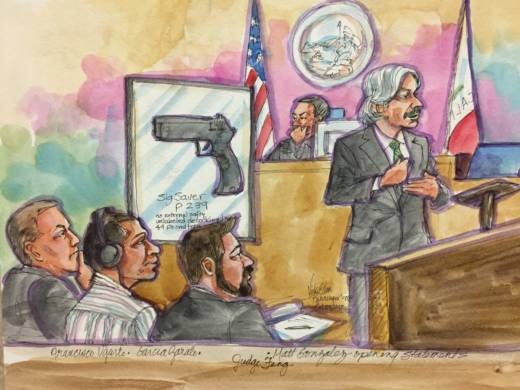Norris' conclusions appeared to contradict those of prosecution witness and retired SFPD crime scene investigator John Evans, who testified last week that "a human being held a firearm, pointed it in the direction of Ms. Steinle, pulled the trigger and fired, killing her."
Norris said Tuesday that it was impossible to conclude from the physical evidence whether the shot was fired on purpose.
Instead, he said, the distances between Steinle, the ricochet mark in the concrete and where Garcia Zarate was sitting -- plus the bullet's vertical rise after it hit the pier -- indicated the gun was "1½ to 2 feet off the ground."
"The weapon seemed to be pointed down toward the ground," Norris said. "It was near the ground. In that position, it would be extremely difficult to aim."
But, he said, his calculations were approximate.
Prosecutor Diana Garcia pointed out that Norris previously testified in this case -- during a preliminary hearing -- that he did not know the angle of the gunshot before the bullet hit the pier.
"You don't know what he was aiming at," Garcia said during a heated cross-examination Tuesday.
"I don't know that he was aiming," Norris said.
Garcia then showed Norris a .40-caliber round of live ammunition, presumably similar to that fired by the .40-caliber Sig Sauer handgun used to kill Steinle, but otherwise unrelated to the case. She asked Norris questions about the round's caliber and the characteristics of hollow-point bullets, then moved the round into evidence over the defense's objection.
Defense attorney Matt Gonzalez said outside court that the prosecution introduced the unrelated round of ammunition to prevent the jury from testing how much pressure it takes to pull the gun's trigger. He wants the jury to feel the how much force it takes to fire the gun because, he says, it will show the trigger could have been pulled accidentally.
"Look, I don't care how many bullets you put in the jury room," he said. "Except ... if this judge doesn't allow the jury to dry fire this weapon, then the only reason this bullet has been admitted into evidence is to jeopardize that."
